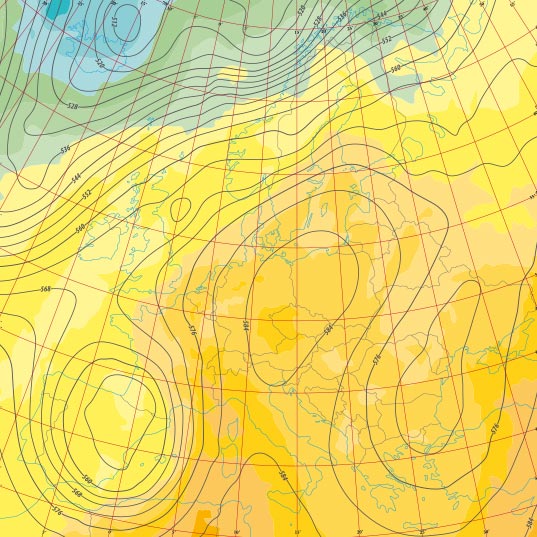What is happening whit La Niña and he weather in Australia? Not two but three. That’s what Australia is experiencing with La Niña. For the third year in a row, the country’s facing an intense period of rainfall.
The Australian Bureau of Meteorology has forecast another at least six months of humid weather. Worrying times for those rebuilding their lives after the devastating floods of the past two years. Is this another consequence of climate change?
What will I learn from this article?
- What causes La Niña, the phenomenon increasing rainfall in Australia?
- La Niña and the weather in Australia
- How La Niña and climate change affect Australian weather
What causes La Niña, the phenomenon increasing rainfall in Australian weather?
 La Niña is a climate pattern that happens when there’s an unusually high difference in atmospheric pressure between South America and Indonesia that causes warm surface water to move toward South-East Asia and colder water to rise up from the ocean depths. The colder air provokes more atmospheric circulation and, as a result, there’s a considerable increase in rainfall. A previous article discusses such phenomena in greater depth.
La Niña is a climate pattern that happens when there’s an unusually high difference in atmospheric pressure between South America and Indonesia that causes warm surface water to move toward South-East Asia and colder water to rise up from the ocean depths. The colder air provokes more atmospheric circulation and, as a result, there’s a considerable increase in rainfall. A previous article discusses such phenomena in greater depth.
La Niña is the counterpart to El Niño, which has the opposite effect. These phenomena form part of the ENSO (El Niño-Southern Oscillation) variation, on which depend the sea temperature, winds, pressure and other oceanic and atmospheric variables throughout the tropical Pacific Ocean.
El Niño and la Niña alternatively warm and cool great areas of the tropical Pacific, the world’s biggest ocean, considerably influencing the rainfall conditions in the sector.
La Niña and the weather in Australia
We cannot prevent these weather phenomena, but our role in climate change does affect the seriousness and frequency of such events.
Indeed, several weeks ago the Australia’s Bureau of Meteorology declared that the country would suffer La Niña for several months. This means the weather on the East Coast of Australia will probably see a Spring and Summer full of rain.
The irregular phenomenon usually appears every 2 to 7 years, but this year is La Niña’s third in a row. When this happens, the problem many areas have is not only facing up to the rainy season, but doing so after having experienced the same situation the year before and still not having recovered from the damage.
“This is La Niña’s third year in a row”
According to a BBC report, la Niña is already causing generalized flooding in Australia that has forced the closure of roads and schools and cut the electricity supply to thousands of homes and businesses. Torrential rain in three Australian states has already seen people evacuated and some parts of the country were hit by up to four times October’s average rainfall in just 24 hours.
How climate change and La Niña affect the weather in Australia
 La Niña is having a remarkable effect on Australia’s weather, increasing average rainfall during these months by 22 %. It occurs especially in the East and North and increases the possibility of generalized flooding.
La Niña is having a remarkable effect on Australia’s weather, increasing average rainfall during these months by 22 %. It occurs especially in the East and North and increases the possibility of generalized flooding.
“La Niña is already causing generalized flooding and excess rainfall in Australia”
The World Meteorological Organization stresses that La Niña is not an event that causes climate change, but a naturally recurring phenomenon that has been happening for thousands of years. Some scientists believe, however, that it could become even more intense and frequent as a result of climate change, although it’s not 100% clear how these interact.
Global warming enhances the effects of naturally-occurring phenomena and increasingly impacts on climate conditions, especially through greater heat intensity, droughts, resulting forest fire risks, as well as unprecedented deluges and flooding.
Sources:
- https://www.bbc.com/news/world-australia-63238065
- http://www.bom.gov.au/climate/updates/articles/a020.shtml